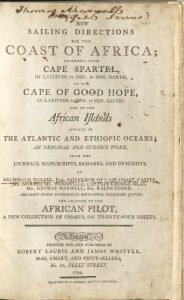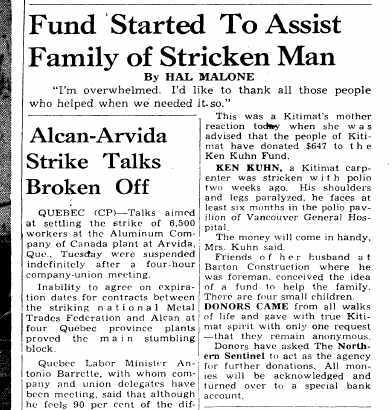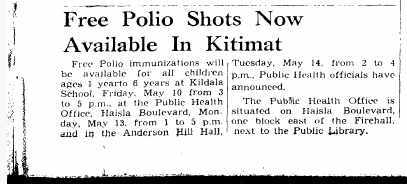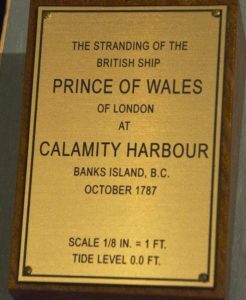Robin Rowland's Blog
August 10, 2025
Piano Man and Me
It’s nine o’clock on a Saturday. I am usually at home watching a streaming movie and getting ready to go to bed just after ten.
This past Saturday at nine, I was watching Part 2 of the documentary Billy Joel: And So It Goes on Crave in Canada (HBO in the United States).
I seldom go out any more, no place to go. There’s also the saying that you know you’re getting old when you go to bed when you used to go out.
Many of my friends are long gone. I never was much of a drinker.
If there is a song that plays me a memory about when I “wore a younger man’s clothes,” It is Billy Joel’s Piano Man.
I really do know how it goes (even without the lyrics on the web).
It was the dark, wet fall of 1982, nine years after Billy Joel first released Piano Man on November 14, 1973.
I had just been laid off from an early 1980s tech start up that went bust. I just had a volatile breakup with my partner of the past two years.
I was hanging out at Dudes, a small gay bar in a narrow back alley in downtown Toronto. The bar was never very crowded, which suited me fine. With what I later learned was Attention Deficit Hyperactivity Disorder, I was never comfortable or successful in a busy bar, the crowd, the noise and in those days the smoke overwhelmed the senses.
John at the bar was a friend of mine. We had been boyfriends for about eight months in 1977, soon after I first came out. For John, there was some place that he’d rather be. He usually worked on Bay Street in the stock industry but he had lost his job in the global recission of 1982.
John really did give me my drinks for free. I never was a drinker, so it didn’t cost the bar much. In those days I always started out with one rum and coke and then usually switched to just cola after that.
The DJ twigged to what was happening. One night, moments after I walked in and John was already pouring my rum and coke, the DJ switched to Piano Man. All three of us burst out laughing.
I’ve always been a Billy Joel fan, but that the memory of that night means Piano Man has always been at the top of my list of my favourite songs from when I am in a mood for melody.
There a couple of other songs related to former boyfriends. They are Simon and Garfunkel’s (1970) and the various musical versions of El Condor Passa and Christopher Cross’s 1979 Sailing .
Rounding out my top four is House of the Rising Sun. The Animals 1964 version (for various reasons which I won’t go into in this post ).
I have always wondered what Joel meant by “Now Paul is a real estate novelist Who never had time for a wife.” The American Songwriter Beyond the Meaning interprets it as “Paul the real estate novelist is a real estate agent who was also named Paul, and each night he sat at the bar and worked on what might become the next great American novel,” which is a likely explanation since Joel was a piano man in the Executive Room tavern in Los Angeles in 1972-1973.
If Paul was real and he could have been, he was one of those who went to Hollywood to make it big in the movies and never made it, in a town where in another song “Weeks turn into years. How quick they pass/And all the stars that never were/Are parking cars and pumping gas” (Do You Know the Way to San Jose 1968 Burt Bacharach and Hal David, first song by Dione Warwick)
There are lessons there. First there are many successful novels that have been written in coffee shops but seldom, if ever, any in bars. To write a book takes long, hard sustained work and a busy bar and smoke (in those days) and alcohol never helps. (Songs that have been written in bars are short). Second, don’t give up on finding a relationship while trying to write. That has never worked out.
Hollywood Note: John at the bar for Billy Joel said “Well, I’m sure that I could be a movie star If I could get out of this place.”
You came down and alley an out of the bleak Toronto November rain into the that hole in the wall bar. There was no piano, just a DJ. The music wasn’t so loud that it drowned out conversations which was good for my ADHD. For me it was a place that when I was lonely the friendly conversation got me feelin’ alright. I did meet a couple of guys.
That hole in the wall bar didn’t last long. Without the crowds and a recession, it eventually closed.
I am also mindful of another song, probably three years earlier when I was 28. I had been dancing the night away on a hot, sweaty summer night. At about 3:30 am after a drag show, I went to a nearby sidewalk cafe was packed with sexy young men. A young woman, a street vendor, showed up in those early hours trying to sell roses to the boys. Some nights she made a sale, most often she didn’t.
For some reason one of those hot sweaty summer nights Those Were The Days popped into my head. I still remember that moment.
Once upon a time there was a tavern
Where we used to raise a glass or two
Remember how we laughed away the hours
Think of all the great things we would do?
Those were the days, my friend
We thought they’d never end
We’d sing and dance forever and a day
John did get out of the place and for a while went on to a successful career in the financial industry.
In 1982, AIDS was just starting to hit. John and the other boyfriends tied to those songs are all gone now.
I did some acting, wrote some radio plays, my first nonfiction book, got a job in television news and later went onto to work in online news for 25 years. I wrote more books, short stories and plays.
So I am still alive at 75, now retired, living in a small town in the wilderness. When I’m the mood for a melody I listen to the old songs and that helps me feelin’ alright.
Oh, my friend, we’re older but no wiser
For in our hearts, the dreams are still the same
(Sony Music has released a digital only album of Bill Joel’s life work to mark the documentary)

In today’s news desert, where it’s harder for interesting items to show up, it was Dan Rather’s substack Steady post Piano Man that alerted me to the documentary. Thanks.,
The songs
Billy Joel
Piano Man
Billy Joel – Piano Man (Official HD Video)
Christopher Cross – Sailing (Official Music Video) [Remastered HD]
Simon and Garfunkel El Condor Pasa version on Youtube (audio only)
Music video by Leo Rojas performing El Condor Pasa
Those Were the Days
Mary Hopkin “Those Were The Days” on The Ed Sullivan Show October 27, 1968
(The old film background is weird) but maybe it made sense in 1968)
The post Piano Man and Me first appeared on Robin's Weir.June 13, 2025
When the most minor character demands attention
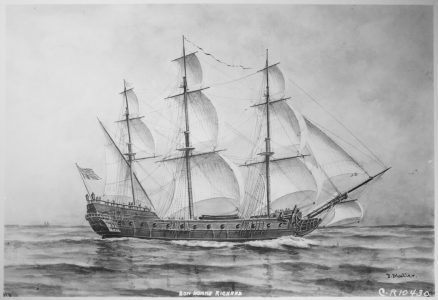 The Bonhomme Richard, 1779. Copy of artwork by F. Muller, 1883 – 1966 – NARA via Wikipedia
The Bonhomme Richard, 1779. Copy of artwork by F. Muller, 1883 – 1966 – NARA via WikipediaIt’s not unusual to discover, while writing a non fiction project, that the most minor of characters deserve their own book and more .
This week as part of my own book research I have discovered a forgotten age of fighting sail officer who is likely worth a biography or a novel or even a series of novels.
Cesar Henrique de Figaniere served in four navies, the French, the United States, the Royal Navy and the Portuguese.
He was from Provence and entered the French royal navy as a boy. When the French transferred the Duc de Duras, an Indiaman, to the United States in 1779 he volunteered to join the renamed ship the Bon Home Richard, under the command of John Paul Jones. Jones commissioned Figaniere as a lieutenant at age seventeen. Figaniere later transferred back to the French navy serving in the Revolutionary War under the command of French admiral François Joseph Paul de Grasse. In later operations, in 1782, he was wounded while serving in the French fleet commanded by Pierre André de Suffren which fought against the Royal Navy commanded by Sir Edward Hughes at the indecisive battle of Battle of Trincomalee off what was then Ceylon.
At the start of the French Revolution the new government offered Figaniere command of a frigate stationed at Marseille. After the fall of the monarchy in 1792, Figaniere resigned his commission and travailed to Italy. He then joined Britain’s Royal Navy, serving as a lieutenant for five years.
His prospects for promotion in the Royal Navy were limited by both his Catholic faith and his French origin. When Portugal asked for British officers to transfer to build up that navy, Figaniere was one of the officers chosen. He gained Portuguese citizenship after he married Violante Rosa Morão, the daughter of a prominent judge. He rose through the ranks, first commanding a corvette, then a frigate and finally a ship of the line that accompanied the royal family when it fled to Brazil in 1807. He returned to Portugal after the expulsion of the Royal Family and died in Lisbon in 1830.
One of his sons, Joaquim eventually became Portugal’s resident minister to the United States (head of a legation where there is no embassy). Another son Jorge was noted as one of Portugal’s most imminent 19th century historians and biographers.
Figaniere is not even a minor character in my book project, he is the father of a minor character, his son Joaquim, the diplomat.
With two ongoing nonfiction projects and a speculative fiction novel, as well as the fact that I don’t speak French or Portuguese, this is not a project I could handle. I would love to see someone else take it on.
Sources
Thomas Balch, The French in America during the War of Independence of the United States 1771-1783, trans. Edwin Balch and Elsie Balch, vol. II (Philadelphia: Porter & Coates, 1895)
and Dicionário Bibliografico Portuguez, vol. 4 (Lisboa: Na Imprensa nacional, 1858) online with help from Google translate.
The post When the most minor character demands attention first appeared on Robin's Weir.May 1, 2025
The Slave Traders’ Pilot Book
Captain’s log 18191029
It was October, 1819. The Royal Navy sloop HMS Pheasant part of the new anti-slavery West Africa Squadron, was on patrol off Accra in what is today Ghana.
For the research and writing on my latests book project, I was reading the log and came across a reference that I had not seen before. The captain, Commander B. Marwood Kelly mentioned that he was using “Dalzel’s Guide” to the African coast. (That is how Kelly signed his logs and reports, not using his first name Benedictus as most histories say)
I set out to find out Dalzel’s guide was. It turned out to be a bit more challenging than I thought.
Archibald Dalzel was easy to find online. He was one of the most notorious slavers who operated out of Liverpool and one of the propagandists promoting the Atlantic slave trade although it is likely he believed his racist attitude that slaves were better off in the Americas than in Africa because they did not, in his view, face human sacrifice. In reality of course, tens of thousands of enslaved worked to death, sacrificed on the altar of capitalist greed.
His book, The History of Dahomy, has been studied by historians and scholars for decades because it justifies slavery and colonialism. It is available in modern reprints. Many of the online entries on Dalzel don’t mention “a guide” but some did, a volume called New Sailing Directions for the Coast of Africa; Extending from Cape Spartel…to the Cape of Good-Hope, And of the African Islands Situate in the Atlantic and Ethiopic Oceans.
Sailing directions have guided mariners for thousands of years. The advice that both Circe and Calypso give to Odysseus are believed to be Homer’s adaptations of poetic guides for the sailors in the Mediterranean. Songs of the indigenous people of the Pacific northwest, recorded in the late nineteenth and early twentieth centuries are sailing directions and storm warnings.
“Pilots” or “sailing directions” began with the invention of the printing press in Europe and were published by both private printers and governments beginning in the middle of the sixteenth century.
I checked Worldcat and found out there were only five copies existing in public institutions.There are just five copies of the Sailing Directions that survive in public institutions: Northwestern University Library in Evanston, Illinois, the New York Public Library, Yale University, the University of Birmingham and the University of the Witwatersrand.
The New York Public Library’s premier centre for Black studies in the US, The Schomburg Center for Research in Black Culture in Harlem was unable to help. At the time, due to staff and budget cuts they weren’t scanning items for researchers outside of New York. Northwestern University in Evanston and Chicago, Medill School of Journalism, Media, Integrated Marketing Communications has one of the best journalism programs in the United States, and there with the help of the faculty hire a student, Kadin Mills, who retried the book and sent me a scanned copy.
My search found a long forgotten aspect of the history of the slave trade. In the last decade of the eighteenth century, the slaver captains of Liverpool united to create their own sailing directions for Africa. The book was printed first in 1799 and reprinted in 1804, just three years before the British Parliament outlawed the North Atlantic slave trade. The South Atlantic slave trade continued and that is the subject of the overall book, where my fourth great grandfather William Pennell, the British consul, in Bahia, Brazil spied on the slave traders.
The Sailing Directions was still the definitive guide to the coast of west Africa. That is why the anti-slavery Royal Navy West Africa Squadron used the guide as their sailing directions. Dalzel et al’s directions if it was available would continue to be use until the 1850s, when there were new surveys and an Admiralty Pilot was printed in 1853.
Admiralty Pilots updated of course, are still in use today by mariners worldwide and in the age of GPS and computers still offer advice, some of it ancient and as well as 21st century best practices and situational awareness.
Each volume of Sailing Directions offers:
Information on navigational hazards, buoyage, pilotage, regulations, general notes on countries, port facilities, seasonal currents, ice and climatic conditions. This information, when used alongside official Admiralty charts, can help to increase situational awareness on the bridgeHigh quality diagrams and photography to help bridge-crews understand critical information during the passage planning stageWorldwide official coverage to support safe and compliant navigation within main commercial shipping routes and ports. This coverage is split across 76 volumes for purchase flexibility
My brief article “The Slave Traders’ Pilot Book” was just published in TopMasts the online magazine of the Society for Nautical Research.
(This URL may change as the Society launched its new website today along with the new issue of the magazine. I will update the URL as necessary)
As my research and writing on the overall book continues, with hundreds of handwritten documents and other short term paying assignments and life, it is taking a long time, probably another year to write the first draft.
There will be another “long forgotten” article about another subject, a forgotten ship, in a different nautical journal later this year.
Robin
The post The Slave Traders’ Pilot Book first appeared on Robin's Weir.April 3, 2025
Top secrets in a trade war
 A report from the British Consulate in Bahia, Brazil, listing British shipping in the port, January to June 1825. (Robin Rowland photo from The National Archives)
A report from the British Consulate in Bahia, Brazil, listing British shipping in the port, January to June 1825. (Robin Rowland photo from The National Archives)Be subtle! Be subtle! And use your spies for every kind of business.
Sūnzǐ 孙子 (Sun Tzu) The Art of War
When nations are in a shooting war, they use spies.
When nations are in a trade war, they use spies.
On Wednesday, April 2, 2025, US President Donald Trump declared a trade war on the planet, raising tariffs in what he believes is “unfair trading” by the entire world against the United States which, it seems, is entitled to continue to dominate world trade.
For millennia nations have used their diplomats and spies to gain an advantage in trade. Monitoring trade has always been a key assignment.
With a worldwide trade war, not to mention the chaos inside the Trump administration, you can be sure that every nation on earth are now using their diplomats and intelligence services to figure out what is really going on in the White House, among American politicians at the national, state and local level, in the State Department and the Department of Commerce and even among the techno-twinkies in Elon Musk’s Department of Government Efficiency.
That means the old spy word “tradecraft” has a special meaning in the world of a trade war.
For centuries, diplomats, spies, entrepreneurs and even criminals stole trade secrets from competing nations and companies. In one famous case, between 552 and 563 CE, two Nestorian monks, working for the Byzantine emperor Justinian I, smuggled silkworms out of China in bamboo poles, ending China’s monopoly on silk.
Today China, where the Art of War ‘s Chapter XIII “The Use of Spies” is studied, is known as one of the largest appropriators of trade secrets and intellectual property. China uses its intelligence services, conventional spies, diplomats, military intelligence, tech savvy civilians and international scholars, technicians and travelers to steal ideas and secrets. That is done by hacking computers, interceptions by signals intelligence, infiltration, theft, blackmail or by the ancient art of bribery. China is obviously monitoring everything coming out of the United States so it can know what is going on.
It’s not just industrial, scientific and other secrets that are important, beyond economics, what goes in and out of a country can also yield vital intelligence.
Two hundred years ago, my fourth great grandfather, William Pennell, was British consul in Bahia, Brazil, from 1817 to 1830. (He is the main character in one of my book projects). Bahia was the main port in Brazil’s South Atlantic slave trade and Pennell was specifically tasked by the Foreign Office to monitor and spy on the slavers. It wasn’t just the slave trade that Pennell monitored, it was all the trade, from any nation, not just Britain, trade that was passing in or out of the port of Bahia. As well as trade statistics, the consulate also reported all ship movements in and out of the port, civilian or naval, whether the ships were Brazilian, British, French, American or from any other nation. Trading intelligence has always been a high priority for diplomats.
One hundred years ago, during American Prohibition, as described in my book King of the Mob, Rocco Perri and the Women Who Ran His Rackets (co-written with James Dubro), in an era of somewhat limited communications, the United States had consulates in every major Canadian city. One of the diplomats main tasks was to spy on the “liquor traffic” heading south. Between 1924 and 1927, Richard Boyce, the US Consul in Hamilton, was kept busy monitoring how Rocco Perri, local mob boss, was getting liquor and beer across the border to the US. He got most of his intelligence by monitoring the paperwork used for exports. In one case, Boyce discovered that boxcars full of Canadian turnips were being dispatched to the Campbell Soup Company, but only a few of the boxcars contained turnips to make soup, the rest had cases of beer and were diverted after they crossed the border.
If the penguins on the barren, icy uninhabited Heard Island and McDonald Islands which were hit by a ten percent tariff could spy on the US, they would. If the iguanas on the volcanic Caribbean island of Montserrat could spy they would. The Montserrat economy, which depended on tourism and agriculture, collapsed after the 1997 volcanic eruption and how faces a 10 per cent tariff on nothing.
It is also clear that when any nation, including Canada, was working on retaliation to the U.S. tariffs, politicians and officials did not just consult trade experts and economists, the leaders ramped up intelligence gathering to figure out what Trump might be doing, how to inflict maximum pain in the U.S. and minium pain at home in that retaliation and to know what potential allies are planning.
That brings into perspective the current Canadian election and the continuing absolute refusal by Pierre Poilievre, the leader of the Conservative Party to get a security clearance. It is interesting to me to note, having written about intelligence gathering for decades, how the government of former Prime Minister Justin Trudeau, on March 4, 2025, made a sudden about face and revealed the President Donald Trump’s goal “is to destroy the Canadian economy so he can try to annex the country.” Although some commentators, mostly conservatives, thought at the time Trudeau was exaggerating or it was Trump joking, events of the past month have shown that Trump and his administration are serious in trying to annex Canada into becoming the 51st State.
Although we may not know the details, there is a pretty good indication, that either through Canadian diplomats or intelligence gathering, including perhaps from the Canadian Security Establishment, that gathers signals, electronic and computer intelligence, that government was given enough information to know that the annexation plans were serious (perhaps because the top officials of the Trump administration are using insecure communications like the commercial Signal messaging app and even Gmail!).
Canada is in a trade war with the United States. Every other political leader, Jagmeet Singh, Elizabeth May and Bloc Quebecois Leader Yves-François Blanche, have security clearances. They need to know not just about traditional threats from potential adversaries and possible foreign interference in the current election, but everything that is happening in our trade relations with the United States and other nations. If the leaders have been briefed, and it is likely they have been briefed, they are campaigning vigorously without revealing secrets. Poilievre would prefer to shout slogans and cliches, post on TikTok, YouTube, Facebook and other social media rather know what is going on. That attitude shows Poilievre is incompetent and irresponsible. It shows that Poilievre is incapable of carrying out the duties of a prime minister, that he really is our version of Donald Trump.
The post Top secrets in a trade war first appeared on Robin's Weir.
March 20, 2025
Who really were the “ruler” guys that drew the Canadian border? Trump doesn’t know.
 A map that was made two years after the Convention of 1818 approved the 49th parallel as the boundary from Lake of the Woods to the crest of the Rocky Mountains. The map-maker, John Melish, located the Red River with a bit more accuracy than earlier map-makers, but hadn’t figured out what to do about the point where the 49th parallel meets Lake of the Woods. This map had only a few improvements over earlier maps, Melish did indicate that Louisiana Territory was carved up into new political units. In this map of the Gulf of Mexico is the Gulf of Mexico. SHSND 973-5 M523u 1821.
A map that was made two years after the Convention of 1818 approved the 49th parallel as the boundary from Lake of the Woods to the crest of the Rocky Mountains. The map-maker, John Melish, located the Red River with a bit more accuracy than earlier map-makers, but hadn’t figured out what to do about the point where the 49th parallel meets Lake of the Woods. This map had only a few improvements over earlier maps, Melish did indicate that Louisiana Territory was carved up into new political units. In this map of the Gulf of Mexico is the Gulf of Mexico. SHSND 973-5 M523u 1821.
(long read)
When US President Donald Trump is not demanding that Canada become “the 51st state” he muses about redrawing a border, a border that is defined by treaties dating back to 1783.
In mid-March Trump, in a media scrum outside the White House, talked about redrawing the border.
In Trump’s derailed train of consciousness, according to reports, he repeated himself.
“If you look at a map, they drew an artificial line right through it, between Canada and the U.S., just a straight artificial line. Somebody did it a long time ago, many, many decades ago,” he said.
And
“When you take away that artificial line looks like it was done by a ruler and that’s what it was, some guy sat down years ago and said that and it makes no sense.”
 Donald Trump rants about drawing the border with a ruler (CBC News)
Donald Trump rants about drawing the border with a ruler (CBC News)So, Who were those guys?
Of course, the 49th Parallel border makes sense. What was, until recently, the world’s longest undefended border along the 49th parallel was first defined in a treaty, The Convention of 1818, between the United States and Great Britain, then the colonial power.
It wasn’t just “some guy” as the most ignorant president in American history stated. The boundary was defined by distinguished diplomats and parliamentarians.
So, who were those guys?
 Albert Gallatin from Wikipedia via Metropolitan Museum of Art.
Albert Gallatin from Wikipedia via Metropolitan Museum of Art.On the American side one of the negotiators was Albert Gallatin a former member of both the House of Representatives and Senate, a former Secretary of the Treasury, founder of New York University and at the time of the negotiations, United States Ambassador to France.
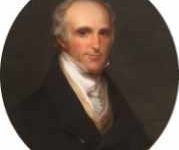 Richard Rush by Thomas Sully via Wikipedia
Richard Rush by Thomas Sully via Wikipedia
The second American negotiator was Richard Rush, who was then the United States ambassador to Great Britain. Rush had been Attorney General of the United States as well as acting Secretary of State.
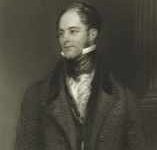 Henry Goulburn (Wikipedia)
Henry Goulburn (Wikipedia)One of the British negotiators was Henry Goulburn, a wealthy conservative politician who as a Member of Parliament who had held cabinet positions as Under-Secretary of State for Home Affairs, and Under Secretary of State for War and the Colonies.
 Frederick John Robinson, 1st Earl of Ripon by Sir Thomas Lawrence via Wikipedia.
Frederick John Robinson, 1st Earl of Ripon by Sir Thomas Lawrence via Wikipedia.
The second British negotiator was a Frederick J. Robinson, from a wealthy land owning family, also a member of Parliament. He had served on a diplomatic mission to Austria, was Vice-President of the Board of Trade, joint-Paymaster of the Forces and member of the Board of Admiralty and a future Prime Minister of Great Britain.[1]
Donald Trump, as he shows so often, doesn’t know what he’s talking about. A future prime minister is hardly a guy with a ruler. Neither are a Secretary of State and Secretary of the Treasury. So, having established that the 49th parallel wasn’t just some guy with a ruler, what was it all about?
The 49th Parallel
The 1818 treaty was negotiated four years after the War of 1812, to ensure that the boundary was defined, an issue that had not been really addressed in the Treaty of Ghent that ended the war. During those peace negotiations, it was the United States that had proposed the 49th Parallel. At the time the idea was postponed.
A hundred years earlier, in 1714, the Hudson’s Bay Company (in 2025 in bankruptcy), had been the one with “the ruler.” The original charter of the Hudson’s Bay Company granted the company a trading monopoly on behalf of England over land drained by all rivers and streams flowing into Hudson Bay.
It was in 1714 that briefly, the fur trading company for economic reasons, had limited its operations to north of the 49th parallel. That limitation did not last, both Hudson’s Bay and the rival Northwest Company expanded their operations well south along the Missouri and Mississippi Rivers and west to the Pacific Coast.
The question of who would control the territory became more complicated with the Louisiana Purchase in 1803,which ceded French control to the United States in the areas drained by the Missouri River. Some tributaries begin north of the 49th Parallel. There is one river that is different, the Red River which originates in what is today Minnesota and North Dakota, flows north to Lake Winnipeg and into Hudson Bay. That made the Red River part of the land chartered to the Hudson’s Bay Company.
In 1818, both the United States and Great Britain wanted to maintain peace and friendly relations so both sides were prepared to give something up.
The first treaties
The Treaty of Paris, 1783 ended the Revolutionary War and defined the boundaries of the new United States at a time when not much was known about the western territories home to indigenous nations. The treaty confirmed that Great Britain had jurisdiction over land on the northern shores of the Great Lakes, something Donald Trump and his advisers now are challenging. The New York Times reported (paywalled) Commerce Secretary Howard Lutnik “wanted to tear up the Great Lakes agreements and conventions between the two nations that lay out how they share and manage Lakes Superior, Huron, Erie and Ontario.”
The treaty with Great Britain granted US jurisdiction over the land east of the Appalachians to the Mississippi River. The northern border was set at “most northwesternmost point” of the Lake of the Woods, which had not been fully explored or mapped. It assumed that the Mississippi reached that far north which it doesn’t. That was one of the mistakes that had to be ironed out in 1818.
The Treaty of Ghent, 1814 ended the War of 1812 and returned all boundaries to the way they were prior to the United States Declaration of War, leaving the need for the Treaty of 1818 to clear everything up.
Convention of 1818
In 1818, Great Britain called an international convention aimed at clearing up issues that were neglected or untouched among nations in the previous decades of war. One set of negotiations was between Britain and the United States to formalize the border with what would become Canada and some related fishery issues. The surveys had improved in the past several years so both sides had somewhat more accurate maps. Both sides had to give up some land. The northernmost portion of the Louisiana Purchase, north of the 49th Parallel was ceded to Great Britain consisting of the upper reaches of the Mississippi Missouri watershed Milk River, Poplar River, and Big Muddy Creek would today be part of Alberta and Saskatchewan. Former parts of the Red River Colony and Hudson’s Bay’ s Rupert’s Land became part of the United States today parts Minnesota, North Dakota, and South Dakota.
West of the Rockies, what became known as the Oregon Territory, was to be under joint control for the next ten years.
The Rush Bagot Treaty
The Rush Bagot treaty was negotiated in 1817 between Rush and the British ambassador to Washington, Sir Charles Bagot, then concluded as part of the negotiation for the 1818 convention. The treaty demilitarized the Great Lakes and Lake Champlain. It allowed both the US and Britain to maintain two and only two small naval vessels on the lakes. The Rush Bagot treaty began the idea of the “longest undefended border.”
The Webster Ashburn Treaty
After William Lyon Mackenzie’s failed uprising in Lower Canada and Louis-Joseph Papineau’s similar rebellion in Lower Canada both in 1837, there were border conflicts, mostly carried out by Americans who believed they were “liberating” Canada from “British tyranny.” In Upper Canada, the attacks by self-styled American “Patriots” became known as the Patriot War, which is one of my current writing projects. You will find updates on my newsletter at ravencoast.substack.com. The other dispute was over the boundary between Maine and Quebec and New Brunswick. It is sometimes called the Aroostook War although there minor skirmishes, there was no actual combat, even though Congress did authorize the mobilization of American soldiers.
At the time of the 1837 rebellions in both Upper and Lower Canada, the United States government did not want to get into a new war with the Great Britain and then President Martin van Buren
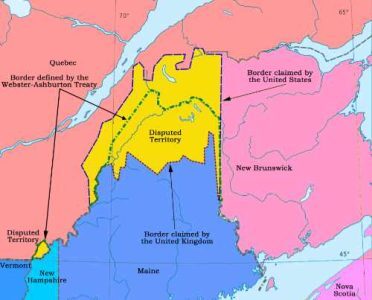 Map of the Maine boindary dispute By Nwbeeson – via Wikipedia.
Map of the Maine boindary dispute By Nwbeeson – via Wikipedia.declared the nation neutral and his administration took measures to enforce the country’s Neutrality Act.
The potential conflict did give both sides the motivation to resolve border issues. The negotiators were the American lawyer and statesman Daniel Webster, then the Secretary of State and Alexander Baring, 1st Baron Ashburton, former Member of Parliament newly appointed to the House of Lords, as a special envoy.
The trickiest negotiations were over the boundary with Maine, which had seceded from Massachusetts n 1820 to become its own state. The boundary had been defined by the Treaty of Paris in 1783. Both the area to the north somewhat toward the St. Lawrence River and east to the Saint John River were disputed in area of mixed settlers including British, American and Acadians. The economic returns from the valuable timber industry increased the tensions.
In Maine, the result was a compromise, in effect dividing the northern part of Maine in half. Britain retained the region along the St. Lawrence River and gave up its claim to the rest of the state. The treaty also clarified the border in the area of the Lake of the Woods and reaffirmed that the 49th Parallel was the border across the prairies to the Rocky Mountains. The two diplomats postponed any discussion of the Oregon Territory.
The Oregon Treaty
The early European settlers from four nations all claimed the Pacific Northwest, Spain, Great Britain, Russia and the United States (all, of course, ignored the indigenous people).
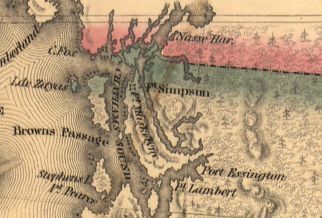 A map from 1841, showing the boundary of “Russian America” on the 54° 40′ line near Fort Simpson. (Wikipedia)
A map from 1841, showing the boundary of “Russian America” on the 54° 40′ line near Fort Simpson. (Wikipedia)The Russian had their own trading forts and ports along the Pacific Coast. In 1824, the United States signed a treaty with Russia and in 1825, Britain signed a similar treaty recognizing the coastal border of “Russian-America” was at latitude 54°40′N and east to 141 Longitude.[2] That today is the southern tip of Prince of Wales Island and the boundary of the Alaska Panhandle.
American settlers were beginning to flood the west and tensions again led to threats of war. The boundary was also an issue in the 1844 presidential election. James Polk’s proposal was the 49th Parallel. The slogan 54-40 or fight was an issue that emerged after the election. Some American politicians wanted to annex the territory all the way to the Russian territory. The British wanted the boundary to be set based on the bank of the Columbia River.
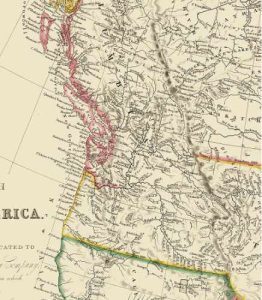 An 1844 map showing the British claim based on the Columbia River. (Wikipedia)
An 1844 map showing the British claim based on the Columbia River. (Wikipedia)When James Polk who became president, the United States was under threat of war with Mexico over the annexation of Texas. To avoid a two front war, Polk formally proposed the 49th Parallel. After much rangling the Oregon Treaty was agreed in 1846 just as the Mexican- America war broke out, which helped both the agreement and ratification. The 49th parallel was extended to the Pacific Coast and then extended to south of Vancouver Island. A further dispute over the San Juan and Gulf Islands was settled by arbitration in 1872.
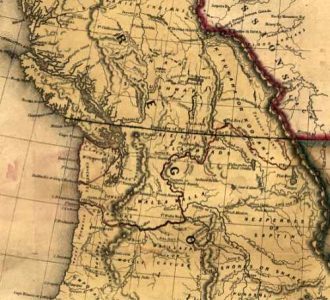 An 1846 map showing the map on the agreement for the 49th Parallel reaching the Pacific. (Wikipedia)
An 1846 map showing the map on the agreement for the 49th Parallel reaching the Pacific. (Wikipedia)Confederation
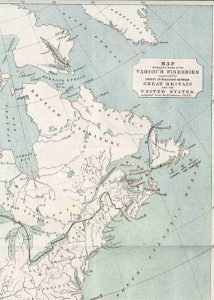 With Confederation and Canada becoming a Dominion of the British Empire, Canada gained some responsibility for the border’s treaties. In 1866, Britain and the United States negotiated a fisheries agreement, that clarified where each nation’s fisher could operate and confirmed the existing border.[3]
With Confederation and Canada becoming a Dominion of the British Empire, Canada gained some responsibility for the border’s treaties. In 1866, Britain and the United States negotiated a fisheries agreement, that clarified where each nation’s fisher could operate and confirmed the existing border.[3]
The Alaska Boundary
The Alaska Boundary dispute has always been a sore point in Canadian history. Beginning with the Klondike gold rush and again with poor maps, there was uncertainty where the boundary of the Alaska Panhandle was to the east. The issue was settled by arbitration, with a six-member tribunal, three Americans, two Canadians and one British. The British member eventually sided with the Americans. Once again the outcome in 1903 was a half and half compromise along the eastern mountains. That meant that the Yukon and Canada were denied a port on the ocean and some of the islands in the Portland Channel that British Columbia wanted were part of Alaska. The Alaska Boundary dispute is regarded as key point in the rise of Canadian nationalism. Canada felt betrayed by Britain. That strengthened the movement for more independence from Britain. Nor was Canada that happy with the United States. The outcome of the dispute was a factor in Canada rejecting free trade with the United States in the election of 1911.
The 1908 Treaty
Scholars and other experts have wondered what Donald Trump sees in the 1908 treaty between Great Britain and the United States. The agreement was basically a housekeeping measure, where the more modern surveying technology and techniques were available to make a definite survey of the border from “the Atlantic Ocean to the Pacific Ocean.” That agreement led to the establishment of the International Boundary Commission in 1925.
Water
There are two agreements between Canada and the United States over water. The 1909 Boundary Waters Treaty governs the practical uses and conservation of water along the borders and created the International Joint Commission that deals with any water issue on the boundary. The Columbia River Treaty was agreed in 1961, to manage flood control and hydro-electricity generation. Serious negotiations began after devastating floods in British Columbia, Washington and Oregon in 1948. The treaty also called for BC to build three dams in the province and for one to be built in Washington. The treaty has no end date, but there were provisions for renegotiation or termination with talks to begin 2024. In March, the Trump administration put the negotiations on hold, during a time of rising tariffs and Trump’s repeated assertions of annexation. In the United States, the Bonneville Power Administration governs the use of flood control and electricity. There are numerous reports that the Bonneville staff have been purged by Elon Musk’s DOGE, but details are sketchy and unconfirmed.
Where did this map come from?
A map circulating on social media purports to show one of the proposals for a United States taking over the more prosperous parts of Ontario. The origin is uncertain. Just compare it with the 1866 map that showed the boundary prior to Confederation.
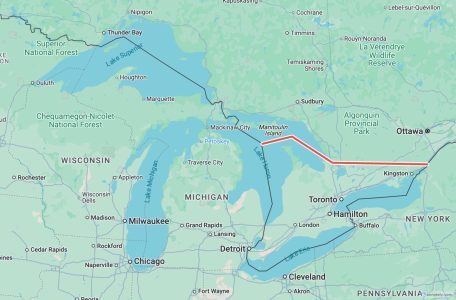 One proposal about redrawing the boundary at the Great Lakes (Facebook)
One proposal about redrawing the boundary at the Great Lakes (Facebook)
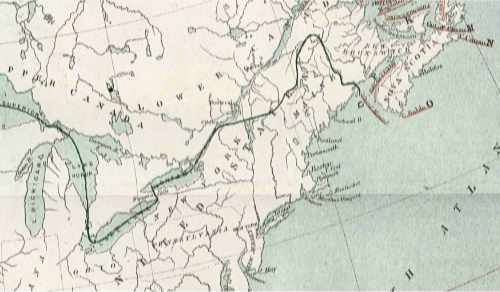 The border from the pre-Confederation fisheries agreement, the same border that exists today.
The border from the pre-Confederation fisheries agreement, the same border that exists today.
So that’s a brief factual history of how the Canada-United States border came to be. You have to wonder, as far as the contemporary United States is concerned, whether treaties and laws matter in any way to Donald Trump and his cabinet of mediocraties and reactionaries. The Trump adminstration now appears to be in a war with the United States Constitution, the seperation of powers and the courts. Trade agreements and other international treaties are scorned and ignored.
For Canada, on the the hand, it is a matter of national sovereignty and independence. We are masters in our own house (maitre chez nous)
__________________
[1]. Later as Viscount Goderich, in 1827, he became the prime minister with the third shortest time in office, 131 days, after succeeding George Canning who died in office after 119 days, leaving Liz Truss the worst at 49 days. At least Goderich served longer than the shelf life of a head of lettuce.
[2]. My home in Kitimat. BC is at 54.0554N. Prince Rupert. BC is at 54.1846 N.
[3]. “FO 881/2636: United States: Memo. North American Fisheries. Map and Appendix. 1782-1866. (Mr. A. S. Green).” UK: The National Archives:
Related Links
‘Artificially drawn line’: The border and Trump’s plan for Canada
CBC News Video
U.S. President Donald Trump has repeatedly said he wants Canada to be the 51st state and has reportedly questioned the validity of the border citing a little-known 1908 treaty. CBC’s Eli Glasner breaks down the latest threats with experts who compare Trump’s strategy to a game of Risk.
Convention of 1818 Canadian Encyclopedia
US State Department web page on historic border negotiations (retrieved March 20, 2025 in case it is taken down)
Text of the 1818 Convention from Yale Law School
CBC News Feb. 7, 2025
NATO Chief Silenced by Trump’s Bonkers Canada Rant
Yahoo News March 13, 2025
Trump Intensifies Statehood Threats in Attack on Canada
New York Times March 12, 2025 (paywalled)
White House official threatens to redraw Canadian border
Daily Telegraph (paywalled) February 27, 2025
Trump Aide Reportedly Threatens to Redraw U.S.-Canada Border
Yahoo News Feb 27, 2025
The post Who really were the “ruler” guys that drew the Canadian border? Trump doesn’t know. first appeared on Robin's Weir.February 6, 2025
Polio behind a plastic screen
(Long Read)
 The Kitimat hosptial in the 1950s (Facebook image)
The Kitimat hosptial in the 1950s (Facebook image)
 The Kitimat hospital later in the 1950s.
The Kitimat hospital later in the 1950s.It was the late spring of 1957. I was six just about to turn seven. One afternoon I was walking home from school when I suddenly began feel pain in my legs and shoulder.
Our house in the temporary Smeltersite settlement in the new town of Kitimat, British Columbia was up hill from the school.
By the time I was halfway up the hill the pain had become so severe that I could barely walk. I stopped every few steps in hopes of easing the pain and catching my breath.
My mother would later tell me she glanced out the window and saw me limping and stopping, limping and stopping.
She came out of the house to help me home and immediately called the doctor. His urgent instructions were to get me to the hospital as soon as possible and he would meet us at the entrance. He mentioned the then dread word “polio.”
My mother called my father at work who then drove us in the five-minute drive to the local hospital.
Now let’s consider what I mean by hospital. In 1957, Kitimat was a new town, under construction. The Smeltersite community was temporary accommodation and so was the hospital (a modern hospital was under construction at what was then called the townsite).
 Lookng down from the hill where we lived toward the hospital (Facebook image)
Lookng down from the hill where we lived toward the hospital (Facebook image)The hospital building was no different from many of the other temporary office buildings created for the construction site. Using the lessons and technology from the Second World War the hospital was well equipped. It was the baby boom, and the maternity ward was state of the art (according to social media posts by now senior citizens who were born there.) What the hospital did not have was an isolation ward. Evacuation would have been difficult. There were two ways in or out at the time, by float plane or ship. A railway link was just being completed and there was as yet no highway.
All aloneThat is how I ended up in a bed in an alcove behind a plastic screen that acted as a jury-rigged isolation system.
I was six, about to turn seven, all by myself behind a plastic screen and in pain.
I can remember the nursing staff were helpful and supportive and often made sure that I could get some of the food I wanted like bananas and Hawaiian Punch.
I was a kid, sometimes rambunctious about being trapped behind then screen, sometimes bored and often lonely.
Everyone who came through the plastic screen, doctors, nurses, orderlies and cleaning staff were wearing what today would be personal protective equipment, gowned and masked. That included my parents who, as much as I remember, who were very strange looking figures in the gowns, the masks and head covering.
It was several weeks before I was released from hospital. My infection can likely be described as “mild.”
Polio was in the community that year. In August, after I was released from hospital the local paper the Northern Sentinel reported that a 24-year-old man, married with four small children, was paralyzed with polio. His name was only published because the community in 1957 was raising funds for the family, in the 1950s equivalent of today’s Go Fundme campaigns, so it is difficult to know how many other cases there were due to medical confidentiality and justified fears of community reaction.
My parents, especially my father, later told me that I was never the same after I was released from hospital. Even if about 75 per cent of polio cases were asymptomatic with about 25 % with only mild symptoms, mild symptoms can change your life.
He said I had been a dynamic, robust and athletic child. After that I was awkward, uncoordinated, the kind of kid who was always picked last for a school team.
 That’s me aged seven, on a beach in the Okanagan when we went on holiday after I was released from hospital.
That’s me aged seven, on a beach in the Okanagan when we went on holiday after I was released from hospital.I would be hospitalized three times until I was 10 for what was likely a recurrence of the symptoms.
 The Kitimat hospital in the 1960s affectionately known as the “pink lady.” It has since been demolished. (Facebook image)
The Kitimat hospital in the 1960s affectionately known as the “pink lady.” It has since been demolished. (Facebook image)Decades later I was diagnosed with ADHD, which means that the polio likely made that problem worse when it came to coordination and becoming the awkward kid who could never catch or hit a ball.
The vaccines arriveThe polio rate in Canada began to fall soon after the introduction of the first vaccine. Canada began a mass vaccination campaign in April 1955, using homegrown production of the Salk vaccine from Connaught Laboratories in Toronto. In Canada, even before the introduction of our national health care, the vaccine was produced under government control and provided free across the country.
The local newspaper, the Northern Sentinel reported that polio vaccination for children began in the then small town in 1955.
Looking back, I wonder if I somehow fell through the cracks. Our family moved from Vancouver to Kitimat in February 1957, so it may be that I missed the vaccination programs.
That was just as doctors were warning that polio was still a threat.
 Northern Sentinel January 1957
Northern Sentinel January 1957There was a mass vaccination of school children in 1958, and I definitely remember that I was vaccinated around that time.
In 1957, with a Canadian population of 16,610,000 with a rate of 1.12 per one thousand that meant there about 18,600 cases in 1957, including me.
By 1959, rates were falling.
The chart form Health Canada shows the spike in polio infections dropped off to zero ZERO soon after the vaccination program began.
The second chart shows the effectiveness of the vaccines. From peaks to zero.
 The worse form of polio, paralyctic drops to zero after the introduction of vaccines. (Health Canada)
The worse form of polio, paralyctic drops to zero after the introduction of vaccines. (Health Canada)Here are today’s Canadian polio vaccination guidelines
Yet the pain lingers
As the New York Times has reported
“To some survivors, the idea of polio’s return is unfathomable.” (paywalled)
Deny, deny, deny
Many of those who survived still live with the consequences.
“People really underestimate how horrific polio was,” said Dr. Karen Kowalske, a physician and polio specialist at University of Texas Southwestern Medical Center in Dallas.
Many who recovered now suffer “post-polio syndrome”: Some of the original symptoms, including muscle weakness and respiratory problems, return.
Dr. Kowalske tends to about 100 post-polio patients who need braces, wheelchairs or other devices to cope with progressive weakness. Some are older adults who became infected before the vaccine was available; others are middle-aged immigrants from countries where polio remained a problem for much longer than in the United States.
To some survivors, the idea of polio’s return is unfathomable.
I am angry. I will not mince words here. Despite all the advice about just talking to the vaccine hesitant, it appears that advice is useless as the lies, misinformation and disinformation are spread again and again on social media. In the United States, the so-called MAHA Moms (Make America Healthy Again) campaigning against vaccination in the United States will make America and their own children sick. That anti vaccine sentiment is not only found in the US, of course, but in all countries were there are no memories of the toll of infectious disease.
Do those women who are vocally vaccine hesitant really want their children to be in an isolation ward, all alone, which in the 21st century would mean they are not only all alone, but they are hooked up to sensors and surrounded by monitoring equipment?
The necessary isolation during Covid could soon be repeated.
I have total contempt for anti-vaxxers who have never experienced a communicable disease. I rage and despair at the increasing number of people and politicians who deny the dangers of Covid, bird flu, season flu, RSV and emerging diseases, who ignore the resurgence of measles, whooping cough and possible polio.
Any anti-masker who shouts to the rooftops or posts on social media about their “freedom” has no respect for their fellow human beings. Politicians and activists who promote anti mask policies when masking is necessary to curb the spread of disease and also promote vaccine hesitancy or denial are ignorant, irresponsible and corrupt, either motivated by ruthless ambition and self interest, religious dogmatism or ideologically blindness
Polio todayThe virus affects that central nervous system in just one per cent of cases, with “symptoms of headache, neck, back, abdominal and extremity pain, fever, vomiting, stomach pain, lethargy, and irritability.”
One in a thousand cases results in paralytic polio which was the fear of parents and kids in the 1950s and throughout history occurs in only one per cent of cases.
The World Health Organization says “Wild poliovirus cases have decreased by over 99% since 1988, from an estimated 350 000 cases in more than 125 endemic countries then, to just two endemic countries)” which are Afghanistan and Pakistan.
On January 13 the New York Times reported https://www.nytimes.com/2025/01/13/he... paywalled
Polio disables many fewer children now. Vaccination has scrubbed the virus from most of the planet, slashing the number of cases by more than 99.9 percent and preventing an estimated 20 million cases of paralysis.
Still, the virus has turned out to be a stubborn enemy, and eradication has been set back over and over again…
In 2024, 20 countries reported polio cases, and the virus was detected in wastewater in five European countries, decades after its official elimination from the region, and in Australia.
There are three types of polioviruses, and eradication requires that all three disappear. For years, the goal has been tantalizingly close.
Type 2 was declared vanquished in 2015, and Type 3 in 2019. Type 1 now circulates only in Afghanistan and Pakistan. In 2021, the two countries together had just five cases; in 2024, they had 93.
But those figures tell only part of the story. In a surprising twist, an oral vaccine used in some parts of the world has kept poliovirus circulating long after it should have died out.
In most low- and middle-income countries, health officials still rely on an oral vaccine given as two drops on the tongue. It is inexpensive and easy to administer, and it prevents transmission of the virus.
But it contains weakened virus, which vaccinated children can shed into the environment through their feces. When there are enough unvaccinated children to infect, the pathogen slowly spreads, regaining its virulence and eventually causing paralysis.
There was an emergency vaccination campaign in the war-torn Gaza strip after a case of polio was identified which was likely caused by the oral vaccine. The vaccination program in Gaza appears to have been successful but it is hard to tell because Israel continues to bomb and attack hospitals and health care facilities, an act which has been a war crime since the Second World War.
The WHO warns as long as a single child remains infected, children in all countries are at risk of contracting polio. Failure to eradicate polio from these last remaining strongholds could result in a global resurgence of the disease.
Thanks to vaccination the WHO says More than 20 million people are able to walk today who would otherwise have been paralysed. An estimated 1.5 million childhood deaths have been prevented through the systematic administration of vitamin A during polio immunization activities.
Stopping vaccines Social media meme
Social media memeWe are now faced with the terrifying prospect of activists who want to rescind approval for the polio vaccine as reported in the New York Times on December 13, (paywalled.)
Aaron Siri,a lawyer who campaigns against all vaccines, who frequently appears in right wing media and podcasts and who is a close ally of Robert Kennedy, Jr President Donald J. Trump’s choice for health secretary, in 2022 filed a petition with the US Food and Drug Administration to revoke its approval of the polio vaccine.
That article is what prompted me to come out and tell the story of what happened to me. And note my polio was a mild case, there were thousands of others that were worse, with children ending up in iron lungs.
The problem is that the memory of the fear of polio is disappearing as the survivors age.
One point should be made about anti-vaxxer Robert Kennedy Jr. He was born in 1954 at the height of the polio epidemic and just a few months before Jonas Salk announced the vaccine on April 12, 1955, with licencing and immunization campaigns in the United States and then around the world coming soon afterward.
That means Robert Kennedy Jr, a member of one of the most privileged families on Earth was likely to have received the polio vaccine and the other childhood vaccinations at close to the head of the line. He was too young by just a couple of years to have any idea of the fear even the youngest kids felt at that time.
The right wing, the conspiracy theorists and anti vaxers are not only growing in the current environment but they are increasingly becoming more dangerous. The political and social media denial of the danger of Covid-19, continues despite with the latest figures which shows that Covid killed 7,079,582 people worldwide.
Bring Back Polio Again. NDP MP Charlie Angus tells it like it is about the Conservative Party of Canada and vaccine denial.
NDP MP Charlie Angus tells it like it is about the Conservative Party of Canada and vaccine denial.
Canadian politics have been disrupted (to put in mildly) since Donald Trump’s threatened tariffs and his continued statements about making Canada the 51st State.
The leader of the Opposition Conservative Party, Pierre Pollievre, appeared to be on the verge of an easy win in the upcoming federal election but he is now (so far) floundering to respond to Trump.
During the height of the Covid crisis, Pollievre was parroting the world wide conservative anti-vax lines, telling reporters in 2022 “I support all Canadians who peacefully stand up for their rights in protesting the Liberal Government’s vaccine vendetta,” Poilievre said in a statement to Global News
In introducing a private members bill also in 2022 the wannabe prime minister of Canada used his social media accounts promoted the legislation as a way to “scrap all vaccine mandates and ban any and all future vaccine mandates” to give people their “medical freedom.” The bill did not become law, but it reflects the attitude that selfish people have the right to infect others.
In the House of Commons, New Democrat Charlie Angus pointed out the truth about Pierre Pollievre. In all his decades in Parliament he has introduced only one bill, his anti-vaccine bill. His colleague Peter Julian then told the House the policy of the Conservatives is “Bring Back Polio Again.”
So Canada also faces the same danger of hostility to science and medicine should the Conservatives become the government, which is less certain than it was just a week ago.
It is not Big Pharma
 Using backbone is a bad analogy. Spinal polio is one of the worse forms that cripples people. (Screengrab from Wikipedia)
Using backbone is a bad analogy. Spinal polio is one of the worse forms that cripples people. (Screengrab from Wikipedia)One of the stupidest arguments against vaccines is that it is all a profit seeking campaign by Big Pharma. Vaccination existed and saved lives long before the neoliberal obsession with corporate power that created Big Pharma.
Variolation against smallpox where a dried-out scab was used to produce a mild infection dates back to at least the mid sixteenth century and perhaps as far back as the eleventh century in China, India and Africa. Edward Jenner first inoculated a boy with cowpox, the first vaccination, in 1796.
Smallpox was so deadly that the vaccination was quickly adopted around the world (while many leaders in all the world’s religions also advocated vaccination it was just as often that it was religion that was the lead in anti-vaccination movements).
Early warning system under attackEven before the inauguration of Donald Trump, the world’s health care and warning system was already precarious. The emergence of Covid-19 created uncertainty, since the scientists and doctors were initially not sure what they were dealing with. That uncertainty did produce a backlash among conservatives, which has led in some cases to not only increased anti-vaccination movements but dismantling of public health procedures in the name of “freedom.”
Now, as of Feb. 5, the new Trump administration is quickly turning the entire planet’s health into chaos. Trump has signed an executive order withdrawing the United States from the World Health Organization, which monitors diseases worldwide and warns against emerging threats.
Now the right-wing government of Argentina is also withdrawing from the WHO after also gutting its healthcare system. But Covid measures were absolutely necessary not what President Javier Mile called Covid-19 pandemic the “caveman quarantine that involved … one of the most outlandish crimes against humanity in history”
While Trump and his Republican allies and suppliants gloat, the rest of the world is going to have to find a way to keep the planetary health surveillance system working by supporting the WHO and increasing their own surveillance and early warning systems.
There is chaos at the US Centers for Disease Control, where its early warning system was put on hold
As David Wallace Wells reported in the New York Times (paywalled)
Last Friday, at the end of a week in which a vaccine skeptic and sometime conspiracy theorist auditioned to lead the country’s nearly $2 trillion, 80,000-person public health apparatus, much of the Centers for Disease Control and Prevention’s website went dark — its weekly mortality reports, its data sets, certain guidance for clinicians and patients, all taken offline. C.D.C. researchers were ordered to retract a huge raft of their own, already-submitted research.
And Inside Medicine
The policy goes beyond the previously reported pause of the CDC’s own publications, including Morbidity and Mortality Weekly Report (MMWR), which has seen two issues go unreleased since January 16, marking the first publication gap of any kind in approximately 60 years. Emerging infectious Diseases and Preventing Chronic Disease, the CDC’s other major publications, also remain under lock and key, but have not yet been affected because they are monthly releases and both were released as scheduled in January, prior to President Trump’s inauguration. The policy also goes beyond the general communications gag order that already prevents any CDC scientist from submitting any new scientific findings to the public.
This is the blatant censorship of science for political and religious reasons not only in the United States but around the world.
A question that hasn’t been asked. If a US scientist was forced by a political hack to retract a valid peer reviewed scientific or medical paper would any journal whether in the United States or around the world that value its credibility accept that retraction? Or would that journal defy the censors and publish what could be a vital paper?
The blocking by the Trump administration of one of new good things George W. Bush did as president, a worldwide HIV AID prevention program can only be described as evil
Wallace Wells wrote
This is after the new administration had already suspended the country’s most successful global-health initiative, PEPFAR, which has saved millions of lives globally. The State Department later issued a PEPFAR waiver, but the program appears to have been rendered effectively inoperative by staff cuts; if the pause holds for even 90 days, it would result in over 135,000 additional children being born with H.I.V. The Famine Early Warning System Network was shut down, too.
What is likely the closing of the United States Agency for International Development will close dozens of programs that promote health around the world.
The AP reports that HIV/AIDS patients in Africa are already being denied care.
The funding turmoil is also closing health centres inside the United States . Yet another reason that the rest of the world will be thankful for their universal single payer health care sytems and will resist any efforts, either by the United States or local conservatives.
Worldwide AP reports that the shuttering of the US Agency for International Development that
The stop-work order has upended many of those projects and has seen nurses laid off and clinics closed in more than 25 countries where two-thirds of all child deaths occur globally, said Janeen Madan Keller, policy fellow and deputy director of global health policy at the Center for Global Development.
And the United States is supposed to be “pro-life”?
A coming plagueMake no mistake. There will be new plague. What the plague will be no one at this point knows.
History has shown that known as Zoonosis or zoonotic disease are likely to trigger a plague. Viruses, bacteria and parasites don’t care about politics.
Zoonotic diseases include measles, smallpox, influenza, HIV/AIDS, diphtheria, Ebola, mpox, the common cold, tuberculosis, West Nile, SARS, bubonic plague, salmonellosis, Rocky Mountain spotted fever, Lyme disease, rabies, variant Creutzfeldt-Jacob disease (vCJD, or mad cow disease in humans), Toxoplasmosis and tularemia. Many can spread from human to human while others can only infect vulnerable humans (for now).
As of this writing bird flu H5N1 is a likely source as the bird virus infects mammals and there have been a few human cases, but luckily, so far, no human-to-human transmission.
The links to the once definitive United States Centers for Disease Control are no longer reliable thanks to the Trump Administration. Here are links to the Province of British Columbia, Canadian Food Inspection Agency and Britain’s National Health Service.
A new variant of bird flu has been found in cattle in the US increasing concern that the flu virus is becoming more adapted to mammals and could eventually infect humans.
 Stupid memes continue to spread disinformation.
Stupid memes continue to spread disinformation.There could be resurgence of a new Covid-19 variant, or something totally unexpected.
Plagues have disrupted human civilization for thousands of years. The United States cannot close its borders to a virus or bacteria or fungus. Almost always the disease whether viral or bacterial jumps from animal to human,
The Iliad begins with Apollo bringing a plague among the Greeks before Troy.
Lord Byron wrote a famous poem about a plague that stopped an Assyrian attack on ancient Israel.
For the Angel of Death spread his wings on the blast,
And breathed in the face of the foe as he passed;
And the eyes of the sleepers waxed deadly and chill,
And their hearts but once heaved, and for ever grew still!
And there lay the steed with his nostril all wide,
But through it there rolled not the breath of his pride;
And the foam of his gasping lay white on the turf,
And cold as the spray of the rock-beating surf.
And there lay the rider distorted and pale,
With the dew on his brow, and the rust on his mail:
And the tents were all silent, the banners alone,
The lances unlifted, the trumpet unblown.
And the widows of Ashur are loud in their wail,
And the idols are broke in the temple of Baal;
And the might of the Gentile, unsmote by the sword,
Hath melted like snow in the glance of the Lord!
Plagues weakened ancient Rome and contributed to decline of its army and economy long before the Empire itself fell. There was the Antonine Plague 165 to 180 CE, which was likely the introduction of small pox to Europe and the Plague of Cyprian, 249 to 270. which may have been a resurgence of smallpox or perhaps the introduction of either measles or an Ebola like hemorrhagic fever,
Bubonic plague, which now can be cured by antibiotics (for now) has occurred again and again throughout history with Yersinia pestis traced back to the Bronze Age, if not earlier.
Plagues are not ancient history. There was the 1918 flu epidemic.
In the 1980s, It was the CDC that first warned the world about HIV/AIDS. The conservative governments of the 1980s for reasons of homophobia and racism did close to nothing, or the bare minimum facilitated the spread of the virus until the danger became so obvious those government had to act.
According to the WHO, ince the beginning of the epidemic, 88.4 million [71.3–112.8 million] people have been infected with the HIV virus and about 42.3 million [35.7–51.1 million] people have died of HIV.
Thanks to Donald Trump and his decrees that HIV death toll will begin to climb again.
Let me close this essay with a photo that is a stark warning. The 1862 Smallpox epidemic on the west coast of North America, which is explained in detail in this University of Victoria website and this Wikipedia article
The smallpox spread quickly among the indigenous people of the northwest, from the Puget Sound to Sitka, Alaska, with a mortality rate of between 60 per cent and 90 per cent.
One cause of the mortality was that the indigenous people around Victoria were forced to flee by white settlers or fled voluntarily while the disease was still incubating.
Only a tiny fraction were vaccinated and there was no earlier smallpox pandemic so no historic immunity. The trauma of that population crash lingers today as indigenous nations recover from two centuries of oppression and racism.
Atlhough the science was known by the 1860s, corrupt missionaries used the pandemic to preach that indigenous customs were the work of the devil and that the disease of punishment for sins and that they should “come to Jesus” (without being vaccinated), something religions have been doing for centuries. No mention of course that some white settlers were also dying of smallpxo and they were not pagans.
During the HIV/AIDS pandemic 120 years later, Christians again repeated the lie that a disease was their God’s punishment. During Covid it was again conservative Christians who preached against pandemic prevention protocols like vaccines, masks and restrictions such as lockdowns.
On Haida Gwaii, the population of one of the great civilizations of the Americas, crashed by an estimated 72 per cent with some areas as high as 90 per cent. Ten Haida villages were abandoned and the ruins can be seen today in Gwaii Haanas National Park Reserve and Haida Heritage Site.
That is what we all face if the stupidity continues.
 Remains of Haida longhouses and totem poles at T’aanu Lingasy (Tanu) Gwaii Haanas Haida Gwaii (Robin Rowland)
Remains of Haida longhouses and totem poles at T’aanu Lingasy (Tanu) Gwaii Haanas Haida Gwaii (Robin Rowland)
 Remains of Haida longhouses and totem poles at T’aanu Lingasy (Tanu) Gwaii Haanas Haida Gwaii (Robin Rowland)
Remains of Haida longhouses and totem poles at T’aanu Lingasy (Tanu) Gwaii Haanas Haida Gwaii (Robin Rowland)
The post Polio behind a plastic screen first appeared on Robin's Weir.
September 12, 2024
1976 When Santorini was remote, welcoming, and cheap
 Sunset over the sunken caldera at Santorini October 1976. (Robin Rowland)
Sunset over the sunken caldera at Santorini October 1976. (Robin Rowland)(long read)
There was at time, not long ago, at least in the six thousand years of human settlement on the Greek island of Santorini, that I and my roommate were the only two people sitting on a stone bench in the town of Fira watching the sun set over the Aegean Sea.
I can’t be certain of the exact date, but it was most probably October 1, 1976. That was a time when Santorini was remote, welcoming, and cheap. Remote, largely only accessible by ferries where Santorini was the usually last call on a voyage through the Cyclades, ships which called first at islands such as Ios, Mykonos and Paros. Welcoming, there were not that many tourists and the people of the island were more than friendly and always helpful. Cheap, especially for backpackers. There was only one hotel for the better off tourists, but many rooms available, mostly in small buildings adjacent to the proprietor’s home and a less than 10-minute walk from the cliffside overlooking the sea and the tavernas that lined the street.
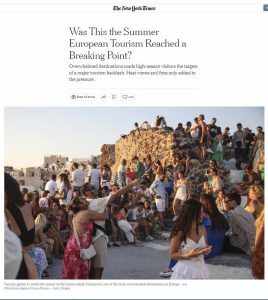 New York Times report on overtourism, showing the crowds trying to see the sunset on Santorini.
New York Times report on overtourism, showing the crowds trying to see the sunset on Santorini.n
Forty-eight years later it is now almost impossible to see that tranquil sunset. There are just too many people cramming into crowds to try and see the sun go down over the caldera of the volcano. According to media reports and photographs, if someone were at the back of the crowd, they would see nothing, but a forest of selfie sticks and arms raising mobile phones. Tables at cliffside restaurants are at a premium.
It was last week that the world’s major media, including The New York Times, The Guardian and Britain’s Daily Express, rightfully pointed to Santorini as a prime example of the overtourism plaguing the world’s most popular destinations.
Now Greece’s prime minister, Kyriakos Mitsotaki, has announced measures to bring down the numbers, including increasing landing fees for cruise ships, an increase in the lodging tax paid by hotels and short-term accommodations and a curb on new construction on the stressed-out islands.
That news coverage brought back my memories of my first visit to Santorini. So, I looked out my Kodak Ektachrome colour slides and scanned them to show what the island was like when I visited forty-eight years ago.
More pictures on my photography site My visits to Santorini in 1976 and 1981
Watching the sunset
When I did my post university backpacking trip to Europe in 1976, Santorini was high on my list of must places to visit, alongside Hadrian’s Wall, Viking Denmark and Norway, Rome, Athens, and Delphi. I had been nuts about the ancient history of all cultures at least since I was eight or nine years old. I was intrigued by the then new contention by archaeologist Spyridon Marinatos that the island of Santorini, also known by its ancient name Thira or Thera, could be the origin of the legend of Atlantis based on the catastrophic volcanic eruption around 1600 BCE. and the archaeological studies of the once thriving town now called Akrotiri (after the nearest village.)
The trip from Piraeus to the islands was very rough with fierce winds and heavy waves rocking the ferry. The knowledge at the back of mind that this was a late September clear weather north to northwest fierce meltemia or Etesian winds, that they were same winds that probably drove Odysseus off course was no consolation. It was one of the very few times when I was on a boat, large or small, that I actually got seasick.
By the time the ferry reached Santorini, the seas had calmed, the meltemia winds begin to die down once the sun sets.
 A view of the Fira on Santorini or Thera, September-October. 1976. (Robin Rowland)
A view of the Fira on Santorini or Thera, September-October. 1976. (Robin Rowland)It was night. Then there were two ways to get up from the ferry docks in the old port of Skala below the town of Fira. Men were waiting with donkeys to carry the older and less adventurous tourists up the stairs along the cliff face to Fira. The rest of us climbed the hill with our backpacks (of course). (There is now a ferry port at Athinos 10 kilometres to the south.)
When I and the others were about halfway up, we met back packers heading down to the ferry. “Don’t eat at the taverna between 5 and 7, wait til the sun sets.”
“OK” I thought. At the top of the hill, women were waiting for the backpackers to rent rooms or houses.
One woman had a small house attached to her home, with two beds. She looked at me and then pointed to another backpacker, a blond guy about my age and offered the two of us the room.
The Guardian reports that in 2024 Santorini has an estimated 80,000 hotel beds, more per square metre than any other Greek tourist destination apart from Kos and Rhodes.
I don’t remember seeing him on the ferry. He was from Germany, also back packing and spoke excellent English. We spent the few days hanging out together, except when I went off searching for archaeological digs.
There was a taverna at the caldera cliff road overlooking the sea. That is where we had breakfast.
We decided that we would follow the advice of the departing backpackers and not have supper until after seven o’clock.
We soon found out why. It was at five that a cruise ship came into port. The donkeys and their drovers were ready to bring the cruise ship passengers up the cliff steps. That was when the taverna raised its prices to the tourist menu and the shops stayed open to sell souvenirs.
With nothing else to do, my roommate and I sat on that stone bench to watch what is now the famous “flaming” sunset. (I lost the note pad with his name and address in Germany many years ago). The funny thing was that along with the sun set, we also became a tourist attraction.
At least three and maybe four people from that cruise ship took our picture, along with the sunset. I remember one woman asking us to turn to her and “smile.”
I keep wondering if somewhere, in the United States, since most of the cruise ship passengers were Americans, there could be in a household’s photo album taken by their parents or more likely grandparents or even great grandparents of two “hippies” watching the sun set on a Greek island.
The cruise ship passengers departed by donkey. The prices in the taverna went back to “normal” and the backpackers, tourists and the locals came in to have dinner.
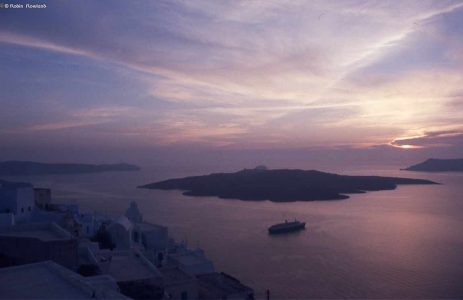 A cruise ship leaves the harbour at sunset over the sunken caldera at Santorini October 1976. (Robin Rowland)
A cruise ship leaves the harbour at sunset over the sunken caldera at Santorini October 1976. (Robin Rowland)There were probably no more than a hundred or so tourists who came off the ship to take a couple of hours to see the sights of Fira. A cruise ship in 1976 was a fraction of the size of today’s giants.
Media reports say that the Hellenic Ports Association reports that 800 cruise ships brought in 1.3 million visitors to in Santorini, who were a major source of foot traffic: a portion of the nearly 3.5 million visitors in 2024 to an island of 15,500 year-round inhabitants.
In an interview with The Guardian, the mayor of Santorini, Nikos Zorzos called for urgent action to stop a construction spree that risks spurring the island’s ruination.
“We live in a place of barely 25,000 souls and we don’t need any more hotels or any more rented rooms,” he told the Guardian. “If you destroy the landscape, one as rich as ours, you destroy the very reason people come here in the first place.”
The building boom is related to the record numbers visiting an island that had already reached “saturation point” before the Covid pandemic, Zorzos told The Guardian.
There were only a few tourists on those sunny early autumn afternoons in 1976. Now photographs form the wire services like AFP/Getty and Reuters published in the media show streets so crowded that people have trouble moving.
The Blacksmith
When I had arrived in Greece, on the ferry from Brindisi to Patras, I had taken an express bus to Athens. When the bus arrived in Athens, the surly bus driver roughly pulled all the luggage out of the bus, without much care and attention to anyone’s bags.
When the driver pulled my backpack out, it somehow got caught on the edge of the luggage compartment and snared. One of the rings holding the pack to its frame was pulled off. He then tossed the backpack on the ground with the other luggage.
I hadn’t really needed the backpack when I stayed in Athens or when I took the ferry, but I had more traveling to do.
On my walk around Fira, I noticed a blacksmith working at forge, something I didn’t expect to see in 1976. On the chance that he could help me, I took the backpack to his shop. With gestures I showed him the broken ring that attached the backpack to the frame. He smiled, nodded, and pulled out an old nail from a box. With the deft and speed of an expert, he first used a chisel to cut off the head of the nail, then took his tongs and quickly curved the old nail partly around the horn of the anvil. Then he took the nail, pushed it through the eyelet of the backpack and the hole in the frame and closed it with the tong. I offered some money, but he shook his head, smiled, and sent me on his way.
Tomatoes and wine
 My roommate and I enjoying the best of Santorini, a Greek salad rich in tomatoes and the local Atlantis wine, September-October. 1976. (Robin Rowland)
My roommate and I enjoying the best of Santorini, a Greek salad rich in tomatoes and the local Atlantis wine, September-October. 1976. (Robin Rowland)I am sure that the food on Santorini could be just as good as it was 48 years ago, but even in a place that attracts tourists form around the world, one wonders how much of the food is still really “local.”
Again, to quote The Guardian, About a fifth of the southern Aegean Island has already been concreted over. But to the consternation of ecologists, authorities in Athens approved even more building permits between 2018 and 2022, enabling construction on an additional 449,579 sq metres of terrain – about 2% of its 76 sq km (30 sq mile) total landmass.
Santorini’s volcanic soil and climate is perfect for two juicy fruits. Grapes and tomatoes. The best Greek salad, with the juiciest tomatoes I have ever tasted in my life come from Santorini, which grows both the local variety of Santorini cherry tomatoes a and regular tomatoes. The grapes are equally delicious and produce fine dry white wines and sweet dessert wines. The Santorini wines were so famous, according to Wikipedia, that the Ottoman Turks, exempted the island from the Islamic prohibition against alcohol. The Russian Orthodox Church adopted Santorini wine for the eucharist. I was told when I was there that best vintages were reserved for the Czars.
Earthquake and recovery
Santorini suffered a devastating earthquake on July 9, 1956, estimated at between 7.5 and 7.7 magnitudeand a 25 metre tsunami. At least 53 people were killed and more than 100 were injured. 35 percent of the houses collapsed, and 45 percent suffered major or minor damage.
Santorini was just beginning to recover 20 years later in 1976. I could see then what appeared to be damage left over from the earthquake.
The airport was built in 1972, and I was told when I was there in 1976 that the people were hoping that the airport would bring in more tourists. It was expanded over the years and as of 2021, is capable of handling Boeing 757 and 737 and Airbus 320 jets.
Santorini did not have an electrical grid until 1974, two years before I arrived.
 An old building in Fira, Santorini Thera, September 1976 (Robin Rowland)
An old building in Fira, Santorini Thera, September 1976 (Robin Rowland)In April 1984, Robert Stock, then a senior editor with the New York Times Magazine, visited Santorini. Stock wrote “take tourists in their stride. They are happy to exchange smiles, to wait on you in their shops and restaurants, to welcome you to their festivals. But they have their own lives to live. After a few days there, you relax.”
Does anyone relax there in 2024?
One of the points of Stock’s report was that in 1984 was that 18 years after the earthquake and tsunami, the Greek government was funding restoration and building on the island, not just to help Santorini recover ( the rebuilding program was also on other islands) but “to channel foreign visitors away from overcrowded Athens and out into the hinterlands, where they can enjoy a taste of village life. “
“Mass tourism really took off in the 1990s and that’s when you began to see change,” Zorzos told The Guardian.
In 2024, the Times reported that it was not just Santorini that was overcrowded but Athens as well “The influx of tourists this summer put Athens under tremendous strain as it grappled with excessive heat, as well as water shortages. Wildfires, which broke out across Greece, have engulfed the forests in the Attica region, even spreading to the suburbs of Athens…
Protests against overtourism flared in Athens in July, with “No tourists” graffiti emblazoned on buildings and residents calling for measures against vacation rentals, which they say are taking over entire neighborhoods.”
Akrotiri
 Akrotiri ruins Santorini Thera, September 1976
Akrotiri ruins Santorini Thera, September 1976Back in 1976, I took a day trip to the east coast, first to walk through the ruins of Akrotiri. I had been at Pompeii just two weeks earlier. In both places, thriving, vibrant towns destroyed by nature, you walk the streets, pause at a door or a window and wonder who the people were who lived in that house. It is likely that the population of the town evacuated after the earthquakes that preceded the eruption. Whether they found safety is unknown, but chances are high that they did not survive the eruption and tsunami.
The formal excavation had begun in 1967 and most of the preliminary work was reparing the site, so only a portion of what tourists see today was uncovered when I was there in1976.
You can still walk the streets as I did in 1976. In 2005, a new roof to replace the original was under construction collapsed, killing one visitor. The site was closed from 2005 to 2012 while a better and more robust shell was built to protect the site. There is now a raised walkway for visitors to view over the site and a specific path through the streets. Archaeological work did not resume until 2016. In 1976, you could just show up, marvel at the bronze age town, and take all the time you wanted. Today with the crowds timed tickets are recommended.
Kamari Beach
My next stop was the now famous Kamari beach which isn’t far from the Akotiri site. The Kamari beach is known for its black sand. As you tell from my photograph, there were probably no more than a dozen people there the day I visited, even though the early October weather was sunny, clear, and warm, as you can see from the sunbathers. Today, the tourist sites say, “Kamari is fully organized, offering a wide range of facilities like sunbeds, umbrellas, and various types of water sports.”
The Volcano
 Hiking the volcano at Nea Kamini, Santorini Thera, September-October 1976 (Robin Rowland)
Hiking the volcano at Nea Kamini, Santorini Thera, September-October 1976 (Robin Rowland)My roommate and I took the tour to the volcano. The caldera itself is mostly submerged after the catastrophic eruption and explosion three thousand years ago. The main volcano is on the island of Nea Kameni. In 1976 and today boats are available from Fira that not only allow you to hike to the volcano but tour the harbour area as well.
It is and was about a thirty-minute hike from the dock to the crater and back along a well-worn path through the rough gravel and sharp rocks that had broken off over the decades.
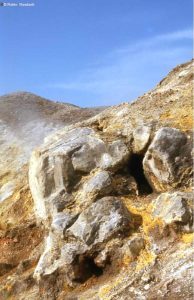 Sulphur from a volcanic vent at Nea Kamini, Santorini Thera, September-October 1976 (Robin Rowland)
Sulphur from a volcanic vent at Nea Kamini, Santorini Thera, September-October 1976 (Robin Rowland)Once you got to the crater itself, you could smell the sulphur and see the rocks stained bright yellow. One interesting difference is that contemporary photographs show yellow flowers growing along the trails. My photographs show no plant life in the same area. What I did spot was a lizard sheltering from the sun under a rock.
Among the changes at the volcanic island today authorities note “Any rubbish should be discarded directly in the designated bins.” There were no rubbish bins in 1976 and one thing I noticed that in one of the depressions off the trail, scattered about were yellow Kodak cardboard boxes that held film cannisters. I would guess that one fool dropped a box and as litter is contagious, other people did the same. Now the problem is, as the same guidelines warn, “Observe safe distances and settings for selfies.”
We took the boat back to the port and once again climbed the stairs. (Today’s tourists have the luxury of a cable car from the port to the town. )
Unlike the night we arrived, it was the heat of the afternoon and as soon as we got to the top, we headed straight for the taverna. If I drink beer, I usually sip and nurse it. The afternoon I chugged a whole bottle of Amstel. Then I ordered a second Amstel and finished it in about another ten minutes.
The moon and Orion
 The setting sun illuminates a church on Santorini or Thera, as the waxing moon rises October. 1976. (Robin Rowland)
The setting sun illuminates a church on Santorini or Thera, as the waxing moon rises October. 1976. (Robin Rowland)I was running out of money, and I wanted to see Delphi before I returned to Canada. I had a flight booked on Icelandic (the backpackers’ airline in that era) from Luxemborg to New York to get me back to Toronto for Canadian Thanksgiving.
My roommate was going to stay another couple of days, but I headed down the steps to the ferry docks for the overnight trip to Piraeus. The ferry left as the sun was setting and I captured a shot of the waxing moon over a small waterfront church as the ship left the island.
Unlike the trip to Santorini, the sea was calm, the sky was clear. I spent most of the night on the deck, watching Orion rise over the Aegean, and thought again of Odysseus and the other sailors who must have seen stars from the deck of their small sailing ships all those thousands of years ago.
On October 9 or 10 I watched the full moon rise over the Tholos of Athena in Delphi and then began the long trip back to Toronto. Delphi was much more expensive both for simple accommodation and meals than Santorini had been. But, of course, Delphi has been a tourist trap for most of time going back to at least the sixth century BCE.
I returned to Santorini briefly in September 1981. The island was still welcoming. When I rented a moped to go to Akotiri and stopped to the photograph the grape harvest, one of the farmers came over and gave me a bunch of delicious grapes. The island was just beginning to change. Where the blacksmith shop had been there now appeared to be a disco with a coloured lights around the entrance.
 Grape harvest on Santorini or Thera, September 1981. (Robin Rowland)
Grape harvest on Santorini or Thera, September 1981. (Robin Rowland)Changing world
In 48 years, the world has changed. A couple of years ago, I talked to a young man just back from his own post university trip to Europe. He stayed connected with family and friends by phone, email, and social media. He was never disconnected from home.
Today the younger members of my extended family post their travels on social media with minutes of taking a photo with a phone.
In the post Second World War era from 1945 to the mid-1990s, if you were a young traveler, backpacker or temporary worker or all three, carrying guide books including the one that began as Europe on $5 a Day (imagine that) or Harvard’s Let’s Go, the student guide to the world, (which lasted until 2019 and closed during the pandemic) you were often on your own for the first time. International phone calls were expensive, except in emergency. You loaded up with American Express travelers’ cheques. You picked up your mail (including, you hoped, money from home) at an American Express office or a “Poste Restante (General Delivery).
Whether the management of American Express imagined it, serving young travelers and wondering exiles was one of the best long-term investments the company made, it is highly likely that everyone of them living today has an American Express card.
Your family heard from you with occasional postcards and letters and hoped you were doing OK.
For the centuries and decades prior to the millennium, for those who could go on a trip it was often the now cliched heroic journey. The other cliches finding yourself or becoming an adult are cliches because in reality those journeys were important to people’s lives.
It wasn’t always confined to the rich and privileged. Even those who not to well off or even poor found a way if they were determined to travel.
There was the vision quest in numerous cultures and societies that supported such quests.
Rich and poor in all religions and most especially the monotheistic religions went on pilgrimages.
The European aristocratic rich had the grand tour.
With better transportation in the 1920s there was the best selling, popular horizon chasing American (and secretly gay) writer Richard Haliburton. Ernest Hemingway, Morley Callaghan and others “found themselves’ and wrote in Paris. James Baldwin also went to Paris in a self-imposed exile from American racism. There were many more.
So now I am this old guy sitting in his home office, with “Those Were the Days My Friend” echoing through his brain. Those days were my “good old days” (of course other parts of the 70s and 80s weren’t so good).
I must wonder; however, how much Generations Z and Alpha will be able to experience that freedom of being on their own, exploring a world? They have been tied to screens from the moment they could toddle and now no matter where they are today their lives are controlled by addictive algorithms created by high tech.
I hope that at least some of them can in their young lives be able to do what I did, sit on a stone bench, and watch a glorious flaming sunset without a couple of hundred people crowding beside and behind them, busy trying to take a selfie.
That’s because with the climate crisis and all the economic and political turmoil in the world, their “good old days” may be worse for their children or grandchildren on a dying planet.
 Kamari beach Santorini Thera was not that crowded in September 1976 (Robin Rowland)The crisis of overtourism
Kamari beach Santorini Thera was not that crowded in September 1976 (Robin Rowland)The crisis of overtourismAs travel has rebounded from the Covid-19 pandemic, the word “overtourism” has moved from the concerns of few activists even before Covid-19 to the front pages and screens of the world’s major media.
The Guardian reports Flight shame is dead’: concern grows over climate impact of tourism boom.
Here in Canada, the CBC reports that Has Banff National Park reached a tourism tipping point? and Nighttime nightmares grow for stargazing spots.
Overcrowding, bad behaviour and nocturnal roadkill prompt new rules
Travel has rebounded since the end of Covid-19 lockdowns and travel restrictions at a time when the planet is under increasing stress. As the Guardian points out increased jet travel means more greenhouse gases. Banff National Park is plagued with increased traffic and is now restricting private car access to some areas.
One of the so-called “influencers” saw no problem at all about renting a car on Santorini. Why would anyone, especially someone young and looking to the future with a looming climate crisis, rent a car on a small island with lots of tour buses and guides who are local and deserve the employment? This aging curmudgeon got along fine on Santorini on foot, by bus and by moped. (To me, unless someone has a physical challenge, or you are in an area where a car is essential for a longer journey, unnecessary car rental just adds to the overtourism crisis. I would note that the influencer and other travelers added to their carbon footprint by flying or taking a ferry, or both as did I unknowingly back in the day.)
Overtourism is a dilemma because overtourism is tied to the rest of the world’s problems. Despite what some demographers claim, humanity has reached the carrying capacity of planet Earth. It is not just humanity encroaching more on the natural world. Nor is just the increasing carbon dioxide in the atmosphere which is fueling fires, droughts, heavier rain, and stronger storms. Nor is it just the biodiversity and extinction crises.
 Off the coast of Santorini or Thera, against the wine dark sea September-October. 1981. (Robin Rowland)
Off the coast of Santorini or Thera, against the wine dark sea September-October. 1981. (Robin Rowland)Despite a vibrant economy there are fewer good jobs especially for the young in both the developed and developing world. The outlook for those jobs is increasingly poor as Artificial Intelligence destroys more jobs than it creates. Neoliberal economics with its emphasis on shareholder value has been cutting jobs and relative wages and increasing work life pressure for more than 40 years. The cult of tax cuts has led to the decay of infrastructure and social supports until little is left and the conservatives still in the cult believe that cutting taxes even more will somehow make things better. There is a housing crisis across the developed world and in the developing world, overcrowded cities, soon to be megacities.
Around the world the now Airbnb monopoly has increased the opportunity for people to travel while clearly destroying available affordable housing for local people in every country that it operates as well as increasing the number of tourists in a location. And like the rest of the High Tech from Silicon Valley, Airbnb has made things worse not better. It’s a must use monopoly and that means that all the former BnB or vacation cabin booking sites are long gone and when you travel, you are forced to deal with Airbnb, just as Amazon and Google are silicon monopolies.
What does all mean? Stress, increased stress. Back in the early 70s when there were dire predictions of a population catastrophe there also prediction that human beings would react like overpopulated rat colonies. We are not there yet but we are getting closer to those rat colonies. It is not just stress from the environment, employment, and housing problems it is stress from a world with wars, political turmoil, and threats to the few remaining democracies. People just need to get away. People crave vacations.
Travel can also open perspectives to different peoples, cultures, and experiences. That is if travel is done properly. That change in perspective becomes more important today as much of the world, while millions still travel, seem to be withdrawing from that world into nationalistic and nativistic bunkers. There is also no perspective if a tourist is in a fly in fly out cocoon where they never leave their own culture or as is today everything is so crowded that perspective is impossible.
It is highly likely that more and more locations will either limit the number of visitors either to an island like Santorini, a city like Venice or a specific location like Rome’s Trevi Fountain (which was busy but not crowded when I visited in 1976) or charge increasingly higher fees to enter or both.
It is still largely the relatively well off who travel the most, The Guardian reported that in the UK, for instance, 15% of people take 70% of flights, while about half the population do not fly at all each year. The same report says that on a global scale and the distinction between the two groups begins to blur. More than a century after the first commercial flight took off in 1914, researchers estimate that less than 5% of the global population flies abroad each year.
Another Guardian article reported that although it may be tempting to see the visitor cap as a possible answer to t e overtourism crisis, experts are quick to dispel the idea. They argue that while limiting visitor numbers may work in the [the Spanish island of] Cíes, it will do nothing to address the issues that have been fuelling protests around Spain and beyond.
“If we try to put caps on the number of people entering a city – as they’ve tried in Venice – then you end up turning the city into a theme park,” says Claudio Milano, a researcher at the University of Barcelona’s social anthropology department.
“What you’ve got in the Islas Cíes and in Machu Picchu and in these big national parks is something that works in parks, where we need careful capacity because of the environment. If you do that in a city, then the message you’re sending out is that this is a theme park.”
Milano says this year’s “domino effect” demonstrations in mainland Spain, the Balearics and the Canaries show the extent to which tourism has become a focus for socioeconomic and political grievances and anxieties.
“We need to remember that these movements are anti-touristification and not anti-tourism – that’s the key and the big difference,” he says. “More than this being a turning point, it feels like a moment when tourism has become politicised in different contexts.”
It’s politics and all politics is local.
Neopuritan holier than thou demand
s for restriction seldom work, they just get peoples’ backs up (as unfortunately the Covid-19 restrictions and vaccination campaigns crucial to saving lives proved).
All these problems are interrelated. Difficult to solve.
I grew up in a era that is called a “Golden Age” when all the science fiction writers, right-wing, conservative, liberal, socialist or whatever political stripe, part of the Greatest Generation, many of whom served in one way or another in the Second World War, assumed that if the planet was faced by an existential crisis like the looming climate catastrophe that just as in the war, the Great Depression and the Space Race, most of the world would unite to face that crisis.
The opposite is happening. The crisis is made more worse as conservative and authoritarian politicians deny that these problems exist and promise a fantasy return to a past that never really existed. More of these politicians are gaining power in the current anti-incumbent climate.
One last old boomer curmudgeon note. Perhaps the overtourism is a symptom of something deeper. More than a Covid rebound. We’ve seen it in some more recent apocalyptic science fiction movies and books. Enjoy yourself while you can because the world is going to total shit. As the old saying goes “Eat, drink and be merry for tomorrow you will die.”
I can only hope I am wrong, and that Generation Z and Generation Alpha will look back to the Greatest Generation, come together and fix things.
For more about overtourism I highly recommend the podcast End of Tourism, produced and hosted by Christopher Christou (disclosure Chris is my nephew. However this podcast delves deep into the issue)
The post 1976 When Santorini was remote, welcoming, and cheap first appeared on Robin's Weir.
June 14, 2024
The archives from Bahia
 While researching the work of my fourth great grandfather , William Pennell, while British consul in Bahia, and his vice consul, his nephew, William Follett, the question is what is the Brazilian side of the story?
While researching the work of my fourth great grandfather , William Pennell, while British consul in Bahia, and his vice consul, his nephew, William Follett, the question is what is the Brazilian side of the story?
I did find an academic reference that showed the correspondence between the British Consul and the then government of Bahia still had survived. Brazil was in turmoil at the time as it revolted against Portuguese colonial rule. There were also internal disputes and during part of the time, Bahia was somewhat independent from the rest of Brazil.
The academic paper also referenced a key incident in the Brazilian slave trade. Pennell was on leave in England, so Follett handled the case.
With the turmoil in Brazil and Pennell on leave there are no surviving documents in the Foreign Office records in Brazil.
 British consular files in the archives of Bahia, Brazil.
British consular files in the archives of Bahia, Brazil.I contact the Bahian Archives to request a copy of the file, since, amazingly, that archive does not have a digitization or copy service.
I then contacted the academic involved but received no reply. This attitude seems to be more prevelant these days than when I was doing research in the past, in the 80s, 90s when academics were eager to collaborate and point a journalistic researcher in the right direction to ensure the accuracy of the work. I noticed that attitude was beginning to change in the early 2000s, as I worked on the book A River Kwai Story, some academics were helpful while others were less so and a couple dismissive. Now in 2024, it seems that old cooperation has disappeared completely. I am not the only author that has experienced that, it is quite common, at least in reports on social media, that everyone is getting the brush off. So it is not just a case of a message going into a spam file.
So with decades of experience in television news I turned to the first choice of a producer working internationally. I found a “fixer” on WorldFixer.
It took a while for the fixer to navigate the bureaucracy and obtain and photograph the files. They have finally arrived and I now have the letters between the President of Bahia and the Consulate and the key information theat I am researching. Not quite. The four month gap in the UK Foreign Office files is matched by a similar four month gap in the Bahia archives.
But I do have enough to advance the story and fill in some of the gaps.
The post The archives from Bahia first appeared on Robin's Weir.
May 27, 2024
Calamity Harbour, a rare account of early exploration of British Columbia
 Model of Prince of Wales (British Trading ship) being repaired at Calamity Harbour, Banks Island (what will be BC) 1787. Model in Kitimat Museum and Archives.
Model of Prince of Wales (British Trading ship) being repaired at Calamity Harbour, Banks Island (what will be BC) 1787. Model in Kitimat Museum and Archives.I have been enthralled by the age of fighting sail since I was a boy when I read the Hornblower series and later Patrick O’Brian’s Aubrey–Maturin Maturin_series of novels.
I am now working on a nonfiction historical investigation, set during the Georgian era Royal Navy.
In a recent online discussion people were complaining how one “commander” of a group told some of his people (also O’Brian fans) that this is not “a literary society.”
That got me thinking, and in response I posted, check out all the sailors over the past two or three centuries who followed the track of the Odyssey and how Homer got a lot of it right.
 One a slightly more serious note, I have found that on the too rare occasions that I get out on a boat on the BC coast, the old stories that describe the winds, the tides, the landscape and seascape are still relevant today.
One a slightly more serious note, I have found that on the too rare occasions that I get out on a boat on the BC coast, the old stories that describe the winds, the tides, the landscape and seascape are still relevant today.
One example is the book, Calamity Harbour. It shows the value of the Patrick O’Brian, C.S. Forester and Dudley Pope,fiction books and how they reflect the history, experiences of sailors with real ships, real winds and real tides.
British Columbia sailor and historian Richard Wells, describes the voyage of two small ships, Prince of Wales and Princess Royal to the BC coast in 1787-1788.
The officers and crews were largely RN veterans given special leave to explore and trade in furs. Lt. James Colnett (a midshipman on Cook’s Resolution) commanded the Prince of Wales, while Charles Duncan on the RN muster roles as Master, commanded the Princes Royal. Of the others on board, significant is the surgeon and naturalist Archibald Menzies (who was the trip’s Stephen Maturin). Both ships from private owners were in poor ship and the book and the models show where the Prince of Wales had to be refitted at where they called Calamity Harbour, on a large island on the BC coast which Menzies named Banks Island for his friend. Wells also built the highly detailed model which is in the Kitimat BC Museum and Archives. The 2003 book was self published and is now quite rare. Colnett’s journals were published academically and the originals are available online. There are also academic studies of the voyage, Colnett and Menzies.
The BC government official map names site also credits Wells with information on and
Wells also wrote A Guide to Shipwrecks Along the West Coast Trail, which is also rare but available in some libraries.
 Model of Prince of Wales (British Trading ship) being repaired at Calamity Harbour, Banks Island (what will be BC) 1787. Model in Kitimat Museum and Archives. (Robin Rowland)
Model of Prince of Wales (British Trading ship) being repaired at Calamity Harbour, Banks Island (what will be BC) 1787. Model in Kitimat Museum and Archives. (Robin Rowland)
 Model of Prince of Wales (British Trading ship) being repaired at Calamity Harbour, Banks Island (what will be BC) 1787. Model in Kitimat Museum and Archives. (Robin Rowland)
Model of Prince of Wales (British Trading ship) being repaired at Calamity Harbour, Banks Island (what will be BC) 1787. Model in Kitimat Museum and Archives. (Robin Rowland)
 Detail of the model of Prince of Wales in Kitimat Museum and Archives. (Robin Rowland)
Detail of the model of Prince of Wales in Kitimat Museum and Archives. (Robin Rowland)
 Detail of the model of Prince of Wales in Kitimat Museum and Archives. (Robin Rowland)
Detail of the model of Prince of Wales in Kitimat Museum and Archives. (Robin Rowland)
 Men refitting the ship onshore. (Robin Rowland)The post Calamity Harbour, a rare account of early exploration of British Columbia first appeared on Robin's Weir.
Men refitting the ship onshore. (Robin Rowland)The post Calamity Harbour, a rare account of early exploration of British Columbia first appeared on Robin's Weir.
May 14, 2024
In memory of Alice Munro
 Alice Munro speaks at Massey Hall, September 21, 2005 (Robin Rowland)
Alice Munro speaks at Massey Hall, September 21, 2005 (Robin Rowland)Canadian author, Nobel Prize winner and master of the short story, Alice Munro, has passed away at 92.
This photo was taken on September 21, 2005 at Massey Hall,during the CBC Lockout, when the leaders of Canadian arts came together rally in support of CBC workes on the picket lines.
Munro’s superb short stories gained a worldwide audience. Set in southern Ontario, her work showed that Canadian writing about a small rural community had universal values. In her speech, Munro spoke of how both the CBC and the arts in general made Canada a better place.
New York Times obituary.
CBC News obituary.
Guardian obituary


